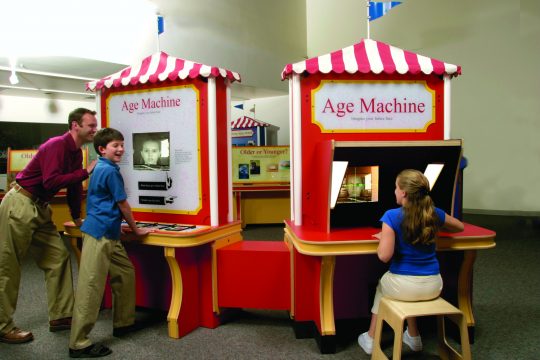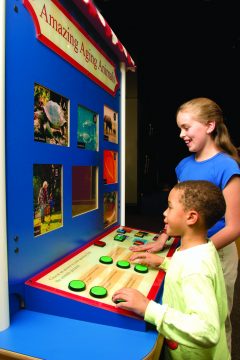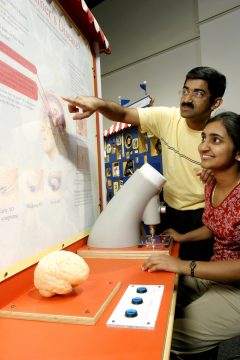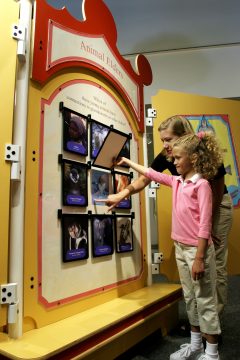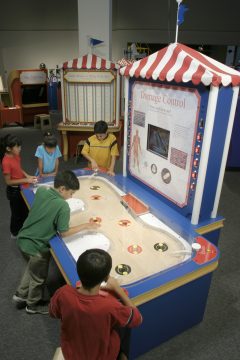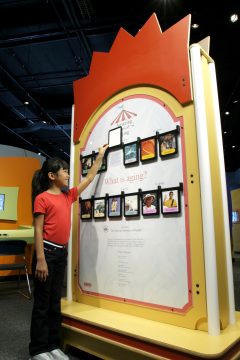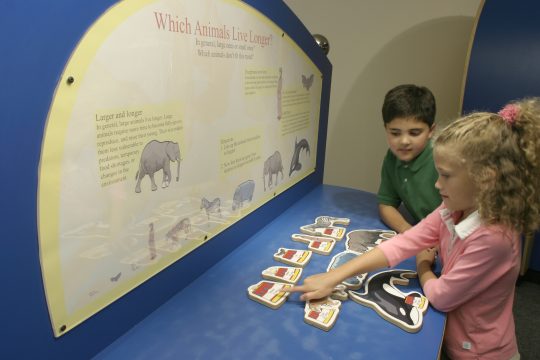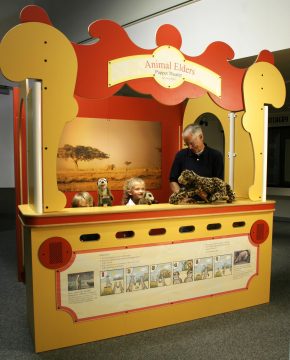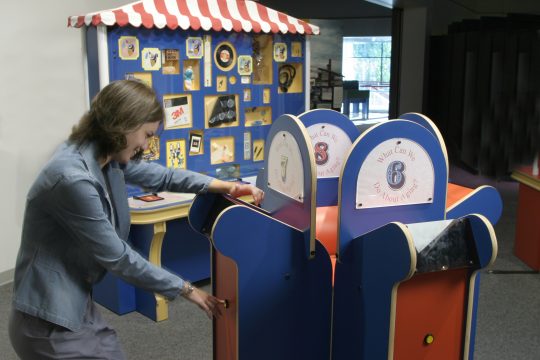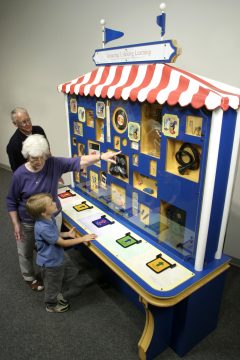Nature of Aging

Project Website(s)
-
Abstract
The Nature of Aging project presents the biology of senescence to families and K-12 students through interactive exhibits and museum experiences. Senescence is perhaps the most complex and least understood biological process yet it is also a universal experience marked by signs we all recognize. Aging has great relevance in the twenty-first century as medical advances and demographic shifts accelerate the growth of our elder population and scientific research narrows in on the central mysteries of the aging process. In partnership with the Center for Healthy Aging at the Oregon Health and Science University (OHSU) and national experts in gerontology research and education the Nature of Aging project has produced a 2,500 ft2 permanent exhibition Amazing Feats of Aging which opened in OMSI’s Life Science Hall in May 2003. A duplicate 2,500 ft2 traveling exhibition was also produced and toured nationally from June 2004 to May 2011. Visitors to the Amazing Feats of Aging exhibition explore comparative aging across the animal kingdom, healthy aging, and the aging of the brain. The exhibition is intended for a family audience and activities are designed to foster intergenerational interaction. The exhibit experience is enriched by a series of educational materials and programs including a teachers’ guide, an interactive website, demonstrations, and activities in OMSI-s Life Science Lab. The Amazing Feats of Aging exhibition was made possible by the contribution of expertise, photographs, video footage, software, prepared slides, and specimens from scientists and researchers across the country including: Aging Concerns, Florida Fish and Wildlife Conservation Commission, OHSU, Oregon Department of Fish and Wildlife, National Institute on Aging, Oregon Zoo, Portland State University, University of California San Francisco, University of Colorado Boulder, University of Idaho, University of Illinois at Urbana-Champaign, University of Virginia, and Washington State University.
-
Additional Information
Additional Abstract 1: The Oregon Museum of Science and Industry (OMSI) proposes to create a 2000-square-foot permanent exhibition The Nature of Aging and a duplicate traveling exhibition for national tour. The exhibition will focus on the biology of senescence with special emphasis on comparative aging across the animal kingdom healthy aging and aging of the brain. Senescence is perhaps the most complex and least understood biological process yet it is also a universal experience marked by signs we all recognize. Aging has great relevance in the twenty-first century as medical advances and demographic shifts accelerate the growth of our elder population and scientific research narrows in on the central mysteries of the aging process. To extend the visitor experience OMSI will produce a series of related educational materials and programs including a family activity guide a website demonstrations for both exhibitions and activities for OMSI’s Life Science Lab. The exhibition is intended for a family audience and activities will be designed to foster intergenerational interaction. The exhibits and ancillary materials will be developed with the support of the Center for Healthy Aging at the Oregon Health Sciences University (OHSU) and other experts from a diversity of fields in gerontology research and education. Additional Abstract 2: In partnership with the Center for Healthy Aging at the Oregon Health Sciences University and other experts from a diversity of fields in gerontology research and education this project will create a 2000-square-foot permanent exhibit and a traveling exhibit for national tour on the nature of aging. The exhibit will focus on the biology of senescence with special emphasis on comparative aging across the animal kingdom healthy aging and aging of the brain targeted at inter-generational families and K-12 students. The project will produce also a series of related educational materials and programs including afamily activity guide a website demonstrations for both exhibitions and activities for museum-s Life Science Lab.


